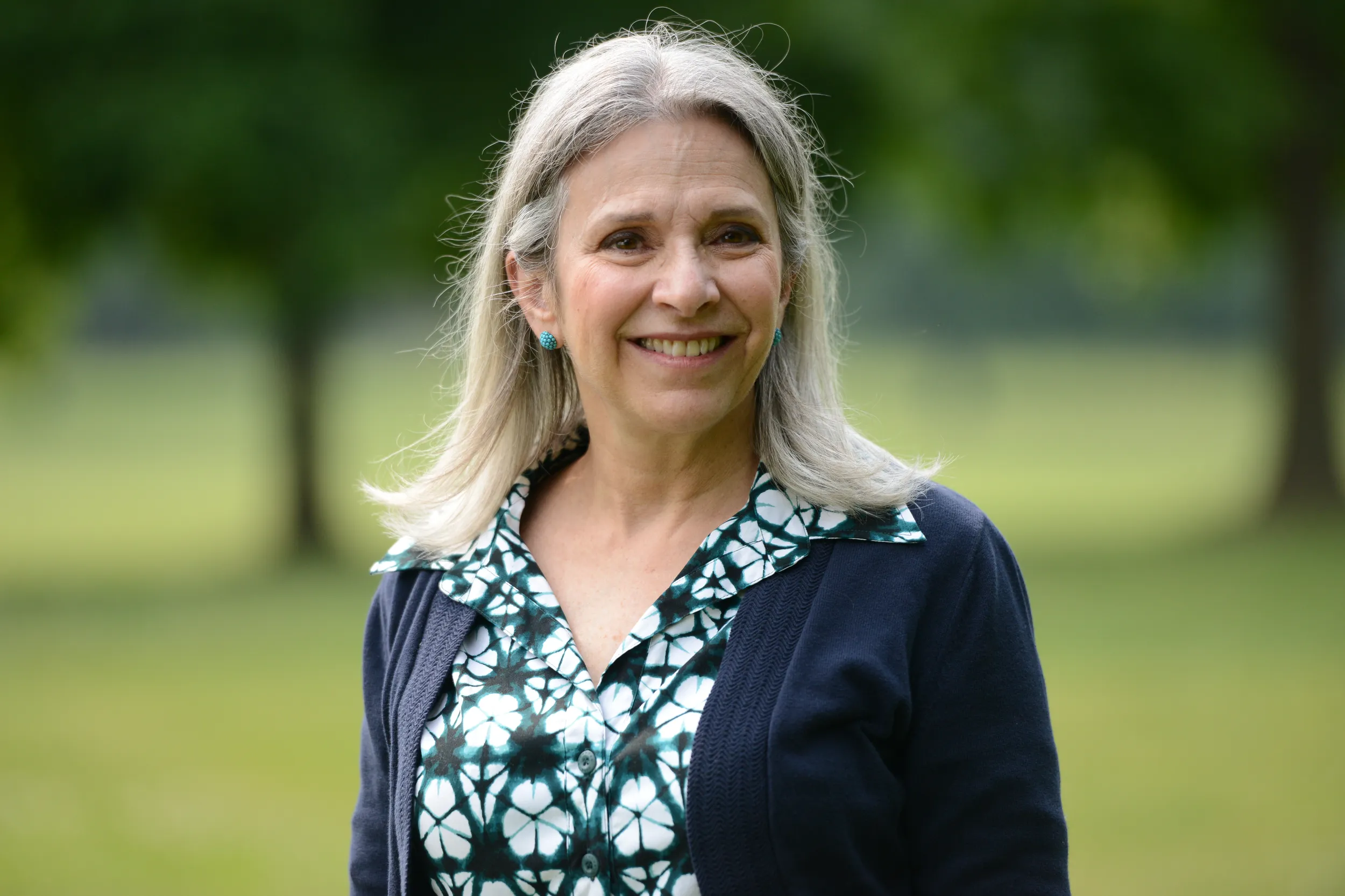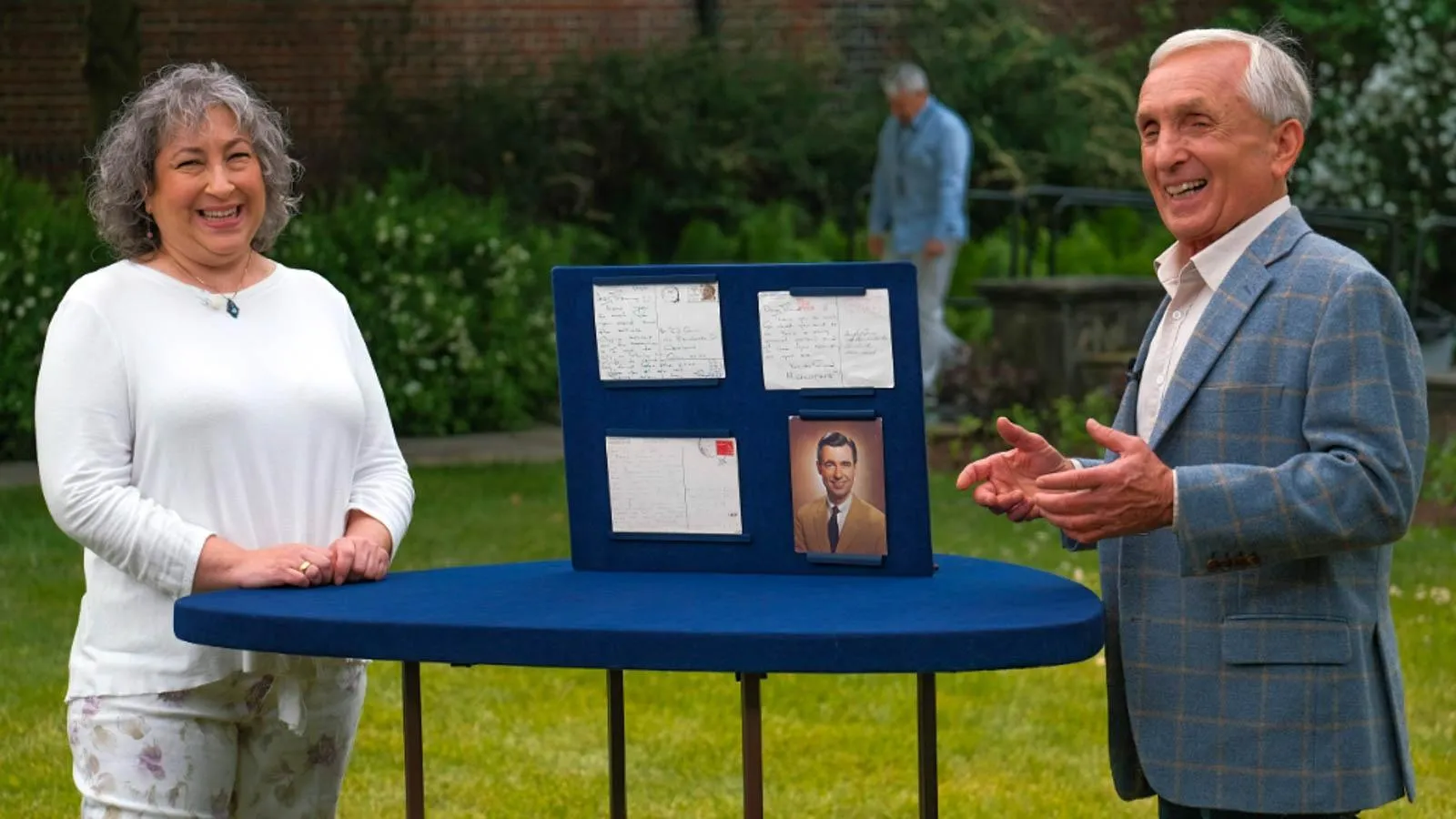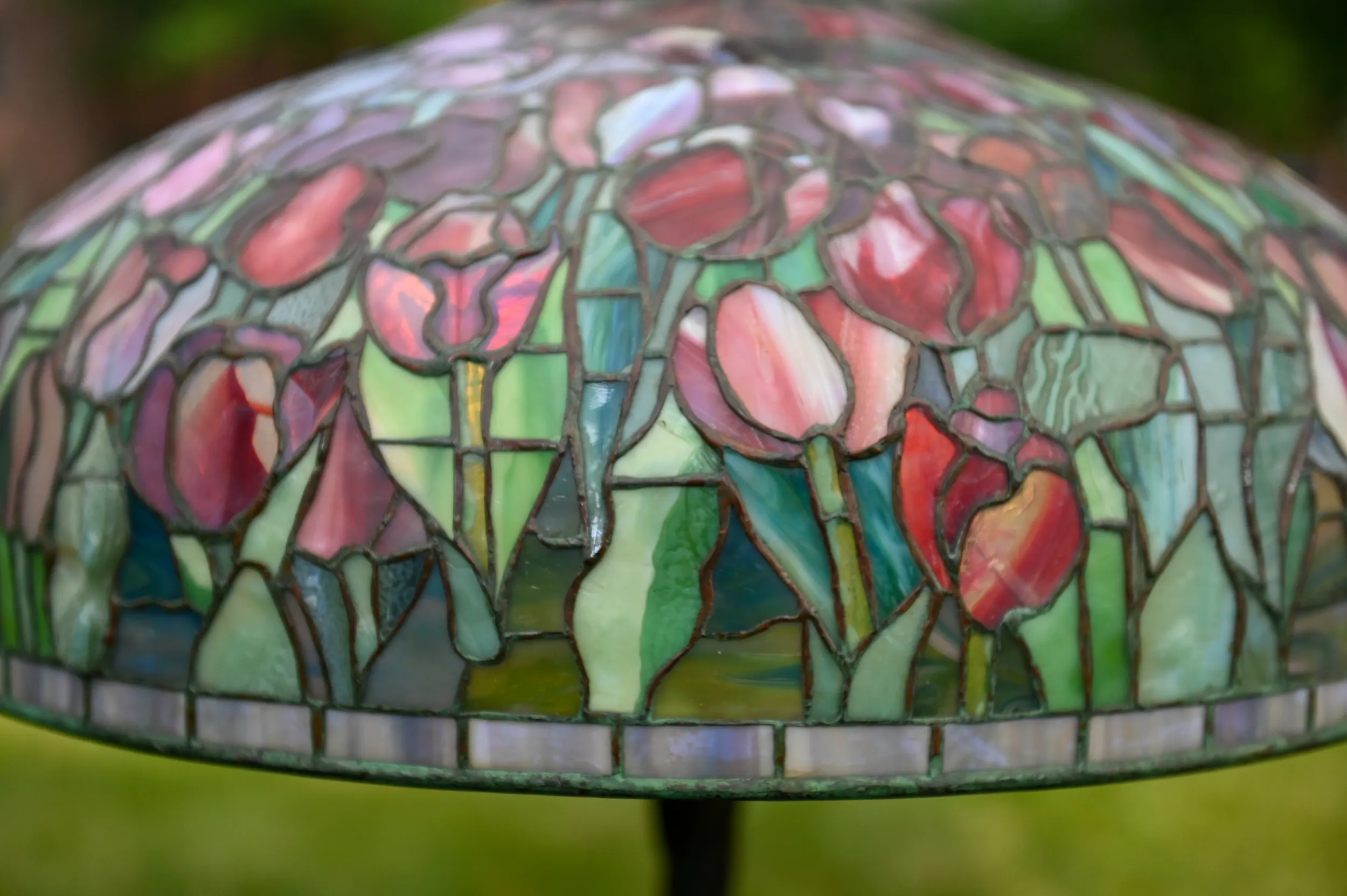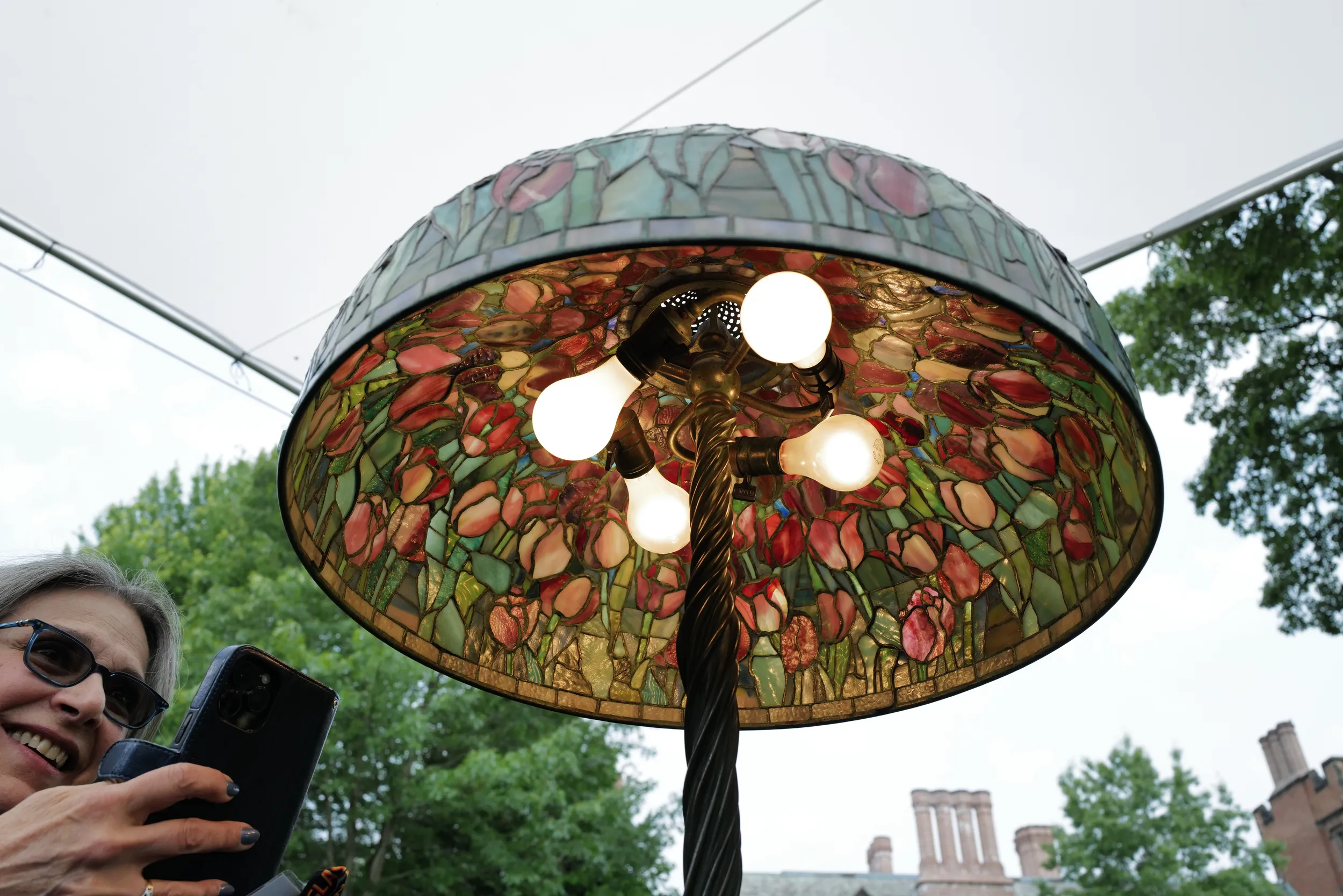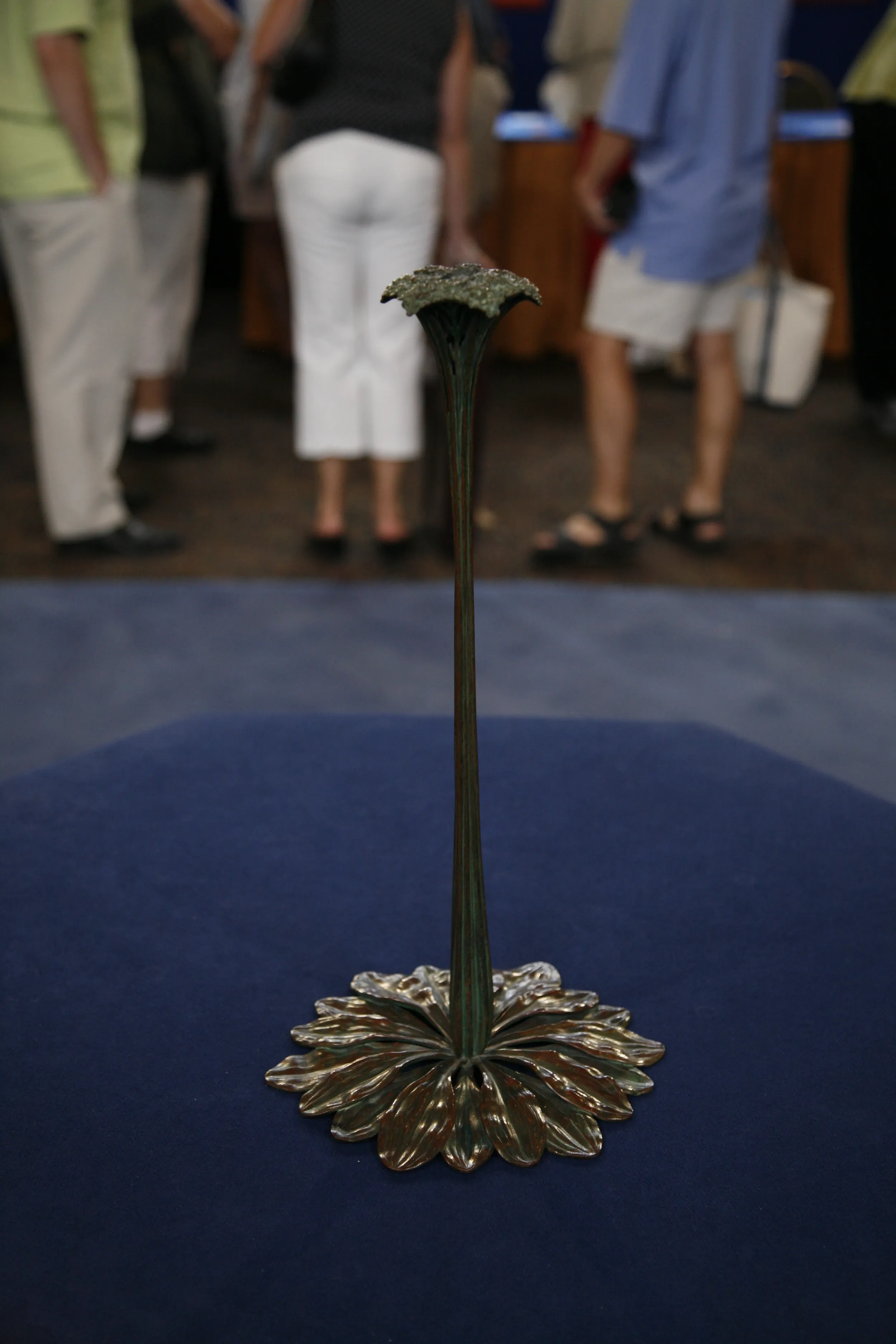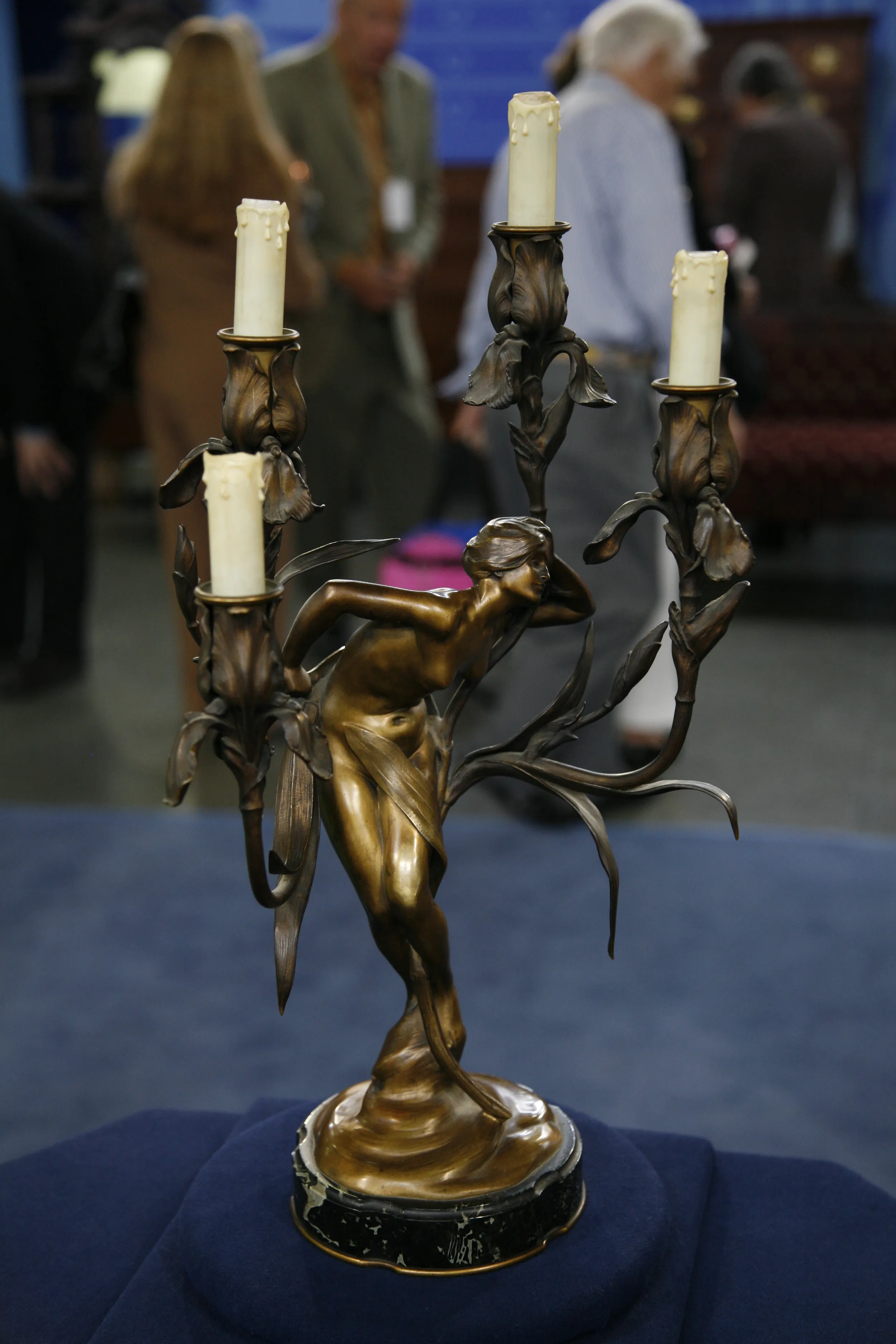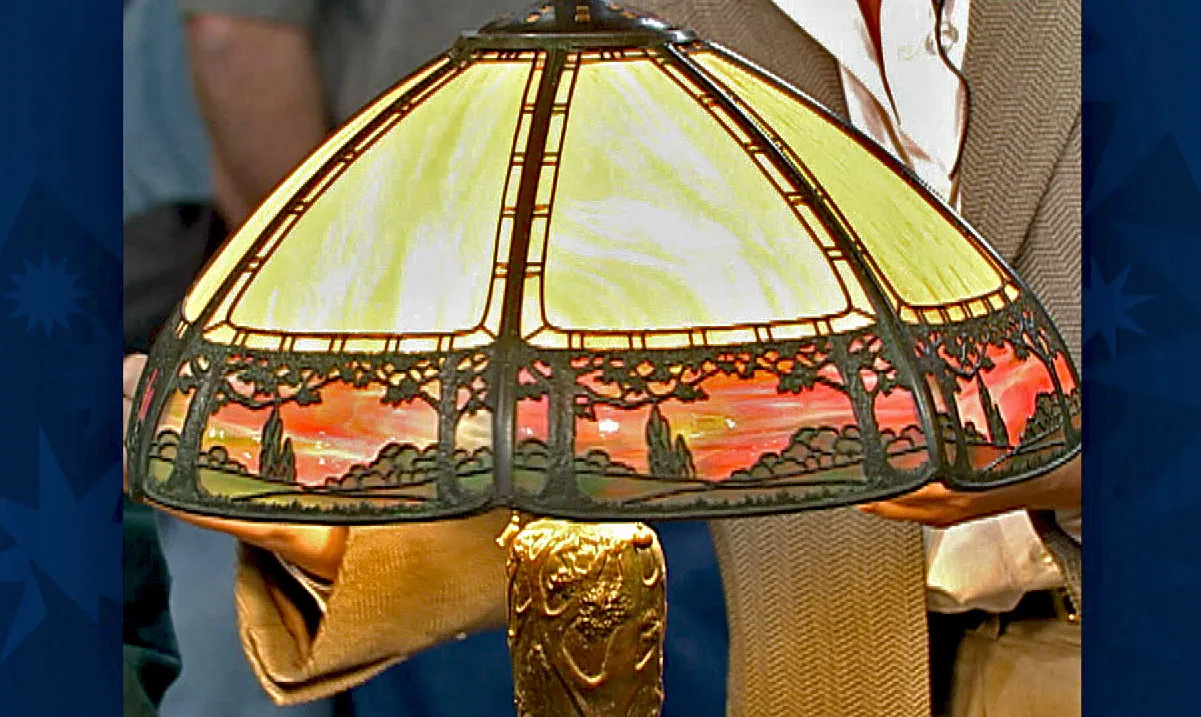GUEST: This lamp was bought new by my grandfather's uncle I would guess sometime before World War I. He liked the lamps with the tulips, but he wanted one with more tulips than the regular tulip shades that they had. So he special-ordered a shade with more tulips than the regular tulip lamp shade. So he bought this lamp brand-new, uh, from the Tiffany counter at Marshall Field's in Chicago. The price was $125 for the base, $250 for the standard shade, plus $125 for the special work on the shade, for a total of $500 for the lamp when he bought it new.
APPRAISER: And how long ago did it come to you?
GUEST: Uh, 1995.
APPRAISER: Okay. Typically, this shade would have had an extra border row along here, and then there would be areas of soil depicted in the shade, and...
GUEST: Oh! Okay.
APPRAISER: And less tulips. And so what's happened here is, um, they brought
more tulips down to the lower part, and there's very little soil now.
GUEST: Uh-huh.
APPRAISER: Um, there's more tulip and stem. This is the thing– Tiffany would make special orders for people. Why not? We'll charge you the extra money, it's okay. Now, Marshall Field was very important to Tiffany, because there were two rooms devoted to selling Tiffany Studios' goods. So here's Tiffany's history in Chicago. Um, he exhibited there in 1893, with the World's Columbian Exposition, and had a very large pavilion with windows and all types of amazing objects. And it really put him on the map in the Midwest. And then he garnered lots of commissions for windows in churches throughout the Midwest and the interior of Marshall Field. Which still exists today-- one of the stores still has the interior decoration, which is filled with these magnificent mosaics and hanging fixtures. The glass is so interesting. You have this wonderful red glass that, what they call phosphate stringing glass. Um, and here's a piece of ripple right here. And it's just… A, a, a very unusual piece of drapery glass. And I really feel that by the 1920s, Tiffany Studios didn't have this kind of glass at its disposal when they were preparing a lamp. So I would say, to be on the safe side, I'm gonna say that I would date this around circa 1915. It has wonderful patina both on the base and on the leading. Um, it's, in fact, it's what a friend of mine in the business calls "righteous patina." It's just the way you want to see patina.
GUEST: Mm-hmm.
APPRAISER: This is the original cap. This is the original base. A lot of times over the years, these bases and shades, they go through several pairs of hands, and people mix and match. And that's okay, because at the time at Tiffany Studios, you actually got to pick your shade and base in most cases.
GUEST: Mm-hmm, yeah.
APPRAISER: So you could mix and match because Tiffany recognized that people had different budgets and different tastes.
GUEST: Mm-hmm.
APPRAISER: Uh, but it's still great when you get to see something that's been together all this time. In terms of value, at auction, um, an estimate for this would be between $150,000 and $200,000.
GUEST: Okay.
APPRAISER: Now, in a retail shop, um, and for in, insurance purposes, um, I would put a value of $375,000 on it.
GUEST: Okay.
APPRAISER: So thank you for bringing it in.
GUEST: Thank you.
